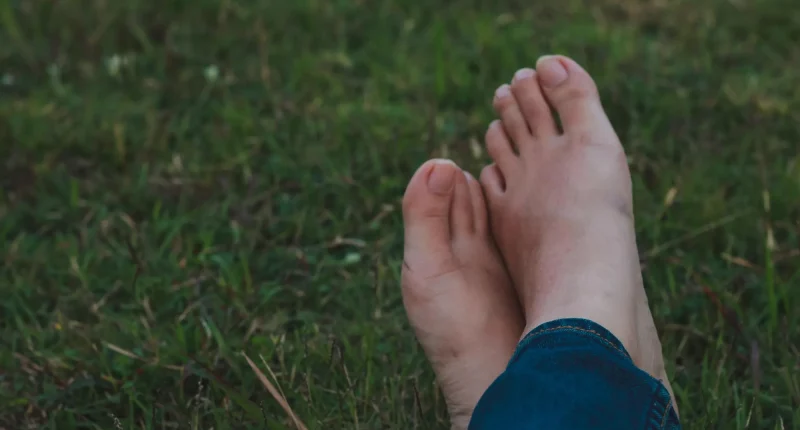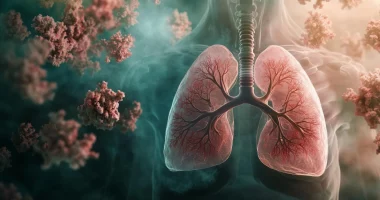Athlete’s foot is a kind of fungal infection that makes your feet itchy, red, and sometimes flaky. It happens when a certain kind of fungus, called Trichophyton, gets into the skin on your feet. This fungus likes warm, damp places, like inside sweaty shoes or on moist floors.
It’s also called ringworm of the foot. Even though it’s contagious, not everyone who goes barefoot gets it. Only about 0.75% of those people do. But overall, about 70% of people might get athlete’s foot at some point.
Usually, it starts between the toes and makes them feel hot, itchy, and sore. Sometimes, the skin even flakes off.
The good news is, most cases can be treated with medicine you can buy without a prescription. But if your immune system is weak or you have diabetes, it’s important to see a healthcare provider right away if you think you have athlete’s foot.
Causes
The fungus that causes athlete’s foot, called Trichophyton, is a type of germ that usually lives harmlessly on our skin. But when our skin gets damp and warm, like when we wear tight or plastic shoes or socks, this fungus can start to grow too much.
Certain things make it easier for the fungus to grow, like tight shoes that squish our toes together. Plastic shoes, which keep our feet really warm and sweaty, can be especially good homes for the fungus. But shoes made of canvas or leather are usually better because they let our feet breathe more.
If our socks are moist and our feet are little bit hot, that can also make athlete’s foot more likely.
Athlete’s foot can extend from person to person in a few ways. If someone with athlete’s foot touches another person’s skin, the fungus can jump over. It can also spread through things like sharing towels, bed sheets, or socks with someone who has it. Even surfaces like floors or shower stalls can carry the fungus and pass it on.
Places where people walk around barefoot a lot, like swimming pools or locker rooms, can be especially risky for picking up athlete’s foot because they’re usually warm and damp.
People with weak immune systems, like those who are sick or elderly, are more likely to get athlete’s foot.
Symptoms
When you have athlete’s foot, your foot skin, mainly between the toes, can feel really itchy. It might also sting or burn. Your skin might look flaky, dry, red, scaly or cracking. Sometimes, it might even crack or ooze, and you might get itchy blisters or swollen spots. The bottom and sides of your foot might get scaly too.
Sometimes, bacteria can join in, making things worse. If the athlete’s foot is really bad and your skin has open sores, bacteria can easily get in and cause more trouble.
If you don’t treat athlete’s foot, it can spread from one toe to another, and you might get a rash on the bottom and the sides of your feet. In infrequent cases, it can even spread to your hands, which is called tinea manuum. The signs on your hands are pretty much the same as on your feet.
If you touch the itchy spot on your foot and then touch other areas of your body without washing your hands, you might spread the infection. So, it’s important to medicate athlete’s foot as soon as you notice the signs. Always wash your hands well with soap or hand wash liquids and warm water after touching the itchy area.
Diagnosis
Doctors can usually tell if you have athlete’s foot by looking at your feet and seeing the typical signs. But sometimes they might want to make sure it’s not something else, like psoriasis, dermatitis, or a mild skin infection.
The main test they do is called a skin lesion potassium hydroxide test. For this, the doctor gently scrapes off a tiny bit of the infected skin and puts it in a special liquid called potassium hydroxide (KOH). This liquid breaks down the human cells but leaves the fungus cells behind. Then they look at these cells under a microscope to confirm if it’s athlete’s foot.
Treatments
Treatment for athlete’s foot varies depending on how severe it is. Most of the time, the symptoms are mild, and you can take care of them yourself without seeing a healthcare provider. You can get over-the-counter (OTC) medications at the pharmacy that work well to clear up the infection.
These medications come in different forms like powders, tablets, sprays, liquids, and creams, and you apply them directly onto the affected skin. You can find many of these topical medications at the store without a prescription. Some common ones are clotrimazole, ketoconazole, econazole, terbinafine, miconazole, and sulconazole. You can even buy some of them online.
If your athlete’s foot is really bad, though, a healthcare provider might prescribe stronger antifungal medication that you have to swallow. These medicines can kill the fungus causing the symptoms. They might prescribe drugs like itraconazole, griseofulvin, or terbinafine. But be careful, because some antacids can mess with how well these oral medications work, and they can affect other drugs too.
It’s important to note that not all antifungal medications are safe for everyone. Some might not be good for older people or young children. Always check with a pharmacist, doctor, or nurse, or read the instructions that come with the medication. And if you’re pregnant or planning to have kids, definitely talk to a doctor because some antifungals can interfere with pregnancy or affect the male and female reproductive systems.
Home Remedies
There are things you can do at home to help with athlete’s foot:
- Keep your feet clean: Wash them regularly with soap and water. It helps to get rid of the germs.
- Try soaking your feet: You can soak them in salt water or water mixed with a little vinegar. It can help to heal blisters faster.
- Tea tree oil: Some people find that soaking their feet in a solution with tea tree oil helps. You can buy tea tree oil online.
- Dry your feet well: After washing, make sure your feet are completely dry, mainly the middle of your toes. Fungus like damp places.
- Wear clean socks: Put on clean cotton socks. It helps to keep your feet dry and stops the fungus from spreading.
- Change shoes and socks often: If your shoes or socks get sweaty, change them. Fungus likes to grow in warm, damp places.
- Keep towels clean: Wash your towels often and don’t share them with others. This stops the fungus from spreading to other parts of your body or to other people.
Prevention
Preventing athlete’s foot is all about keeping your feet, shoes, and socks dry and clean. Here are some tips from experts:
First, clean your feet two times a day with soap and water, and be sure to clean the middle of your toes. It’s important to keep your feet dry, so you can apply talcum powder which is antifungal to them, which you can find online. It’s also good to go barefoot at home whenever you can.
After exercising or playing sports, take off your shoes right away. When you do wear shoes, make sure they’re loose-fitting and well-ventilated, especially in warmer weather. Shoes made of canvas or leather are best.
Before you put on socks or stockings, make sure your feet are completely dry. Choose socks made of materials like cotton, wool, or silk that take moisture from your feet. If you’re going to a public pool or changing room, wear pool slippers to save your feet. You can find them online in different sizes.
It’s important to change your shoes regularly so they have time to dry out. Wash your sheets and towels often.
If you have a pet with hair loss, it might have athlete’s foot. Take it to the vet to be sure, because people can affect athlete’s infection foot from their pets.
Complications
Even though athlete’s foot usually isn’t too serious, it’s important to treat it early to avoid any complications.
One complication is a fungal nail infection, where the fungus spreads to your toenails. This can make your nails thick, white, and crumbly, and it might even hurt. If it’s not treated, it can make wearing shoes or walking painful.
Sometimes, athlete’s foot can cause a bacterial infection in your foot. This can make your foot feel hot, swollen, and really painful.
In rare cases, the infection can spread to your lymph system, which is a part of your body’s defense system. This can cause infections in your lymph vessels or nodes.
Another complication is cellulitis, a serious bacterial infection deep in your skin. If it’s not treated, it can cause even more serious problems like blood poisoning or bone infection.
Some people are allergic to the fungus that led to athlete’s foot. This can make blisters form on their hands or feet. It’s rare, but it can happen.
Summary
Athlete’s foot, a common fungal infection, can cause complications if not treated promptly. These include fungal nail infection, causing thick and painful toenails, and secondary bacterial infection, resulting in swollen and painful feet. In severe cases, the infection may spread to the lymph system, causing lymphangitis or lymphadenitis.
Cellulitis, a deep skin bacterial infection, can also arise, potentially leading to serious complications like bone infection or blood poisoning if left untreated. Additionally, some individuals may develop allergic reactions, leading to blistering on the hands or feet. Prompt treatment is crucial to prevent these complications.









